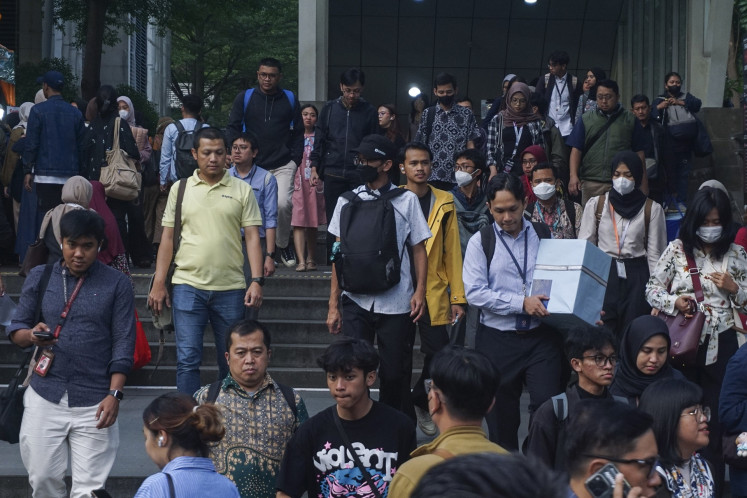Popular Reads
Top Results
Can't find what you're looking for?
View all search resultsPopular Reads
Top Results
Can't find what you're looking for?
View all search resultsDiabetes, obesity lurk behind condensed milk
Change text size
Gift Premium Articles
to Anyone
B
ehind its sweetness, susu kental manis (condensed milk) is putting your children’s health at risk if it is consumed in excessive amounts.
Experts said such milk products mainly consisted of sugar and milk, which could increase the risk of diabetes and obesity in children.
“Our body has a certain tolerance level and research found that consuming sugar, which is more than 10 percent of total energy, may lead to decreasing insulin sensitivity that will trigger hyperglycemia [high blood sugar],” Rita Ramayulis, an author and nutritionist, told kompas.com.
In the piramida gizi seimbang (Balanced Nutrition Pyramid), milk is included as a source of protein. Eight grams of protein is equal to one portion of egg, fish and tempeh.
“Milk is supposed to contain around 8 g of protein and calcium about 250 g,” said Rita. “Based on the pyramid, the allowable amount of sugar for children is one to two tablespoons, which is equal to 26 g.”
Read also: Obesity among Asia-Pacific children is a growing health crisis - researchers
“If a child drinks two glasses of condensed milk daily, just like the balanced nutrition chart advises, the consumption of sugar will exceed the balanced daily meal for children,” Rita said.
Moreover, too much sugar will also be bad for children’s teeth.
“Children who consume too much sugar in milk form and do not brush their teeth afterwards will get cavities,” she added.
The official website of the Health Ministry states that including milk as part of Indonesians’ daily consumption requires further research.
This is because it still needs more information on data prevalensi intoleransi laktosa (lactose intolerance prevalence data), milk allergies and contaminated milk due to poor storage. Meanwhile, from an economics perspective, the price of susu yang difortifikasi (fortified milk) is still too expensive for some. (wir/asw)











